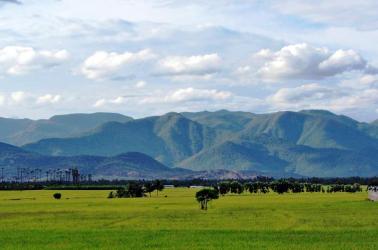
Researchers have discovered a new species of ant in the Western Ghats, recognised as one of the world's 'hottest hotspots' of biological diversity.
The new species was found in the Periyar Tiger Reserve. The research, published in the latest issue of peer-reviewed journal Zootaxa.
Belonging to Tyrannomyrmex, a rare tropical genus of ants, the species was discovered by the team from the Vallakadavu range during an expedition a year ago.
Paying tribute to their mentor and eminent myrmecologist Musthak Ali, who is regarded as the country's 'ant man', the authors of the study have named the new species Tyrannomyrmex alii (or T. alii).
Tyrannomyrmex is a rare myrmicine (subfamily of ants) ant genus that is distributed in the Indomalayan bio-region that extends from southern India and Sri Lanka to southeast Asia.
The particular genus had been erected in 2003 with the discovery of the species, Tyrannomyrmex rex Fernández, in Pasoh Forest Reserve, Malaysia. Later, two more species that were under the same genus had been discovered; Tyrannomyrmex dux (or T. dux) from the Ponmudi hills in 2007 and T. legatus from the Sinharaja Forest Reserve in Sri Lanka in 2013.
T. alli has thus become the four species of the rare genus and the second one from India. Notably, both of the Tyrannomyrmex species that have been described from the country are known from the Western Ghats range in Kerala.
Tyrannomyrmex alii: Know More- The new species can be distinguished from the other species of the same genus through its morphological characteristics.
- While it differed from T. dux by the petiolar shape, it became dissimilar to T. legatus and T. rex by surface sculpture and pilosity.
- There are detailed morphological descriptions of the gyne and the worker castes, images from scanning electron microscopy, a key to all four known species of Tyrannomyrmex, and a note on the ecology of this rare genus.